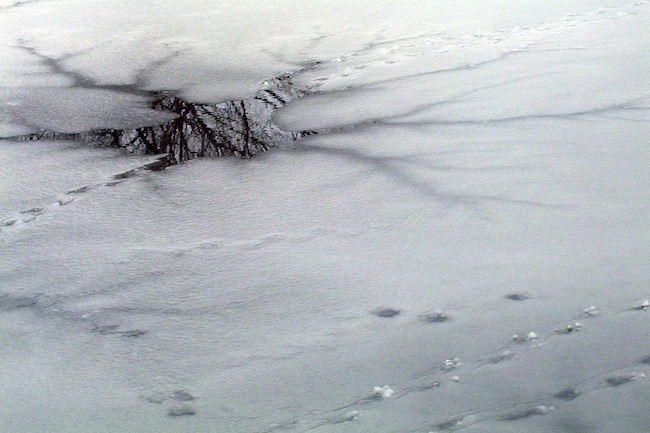Safe Ice Thickness | When Is Ice Safe? by for Modern Survival Blog
When is ice safe? There is no for-certain absolute answer. Really, ice should never be considered safe. Though there are some ice thickness safety guidelines to follow (listed below).
Ice Safety
You can’t judge the strength of ice just by its appearance, age, thickness, temperature, or whether or not the ice is covered with snow.
Ice strength is based on ALL these factors — plus the depth of water under the ice, size of the water body, water chemistry and currents, the distribution of the load on the ice, and local climatic conditions.
New Ice vs Old Ice
New ice is usually stronger than old ice. Four inches of clear, newly‑formed ice may be a safe ice thickness support one person on foot, while a foot or more of old, partially‑thawed ice may not.
Ice Thickness Uniformity
Ice seldom freezes uniformly. It may be a foot thick in one location and only an inch or two just a few feet away.
Ice Over Flowing Water
Ice formed over flowing water and currents is often dangerous. This is especially true near streams, bridges and culverts. Also, the ice on outside river bends is usually weaker due to the undermining effects of the faster current.
Snow Over Ice
The insulating effect of snow slows down the freezing process. The extra weight also reduces how much weight the ice sheet can support.
Ice Near Shore vs Farther Out
Ice near shore can be weaker than ice that is farther out.
Booming Ice
Booming and cracking ice isn’t necessarily dangerous. It only means that the ice is expanding and contracting as the temperature changes.
Fish Movements
Schools of fish in a given location can also adversely affect the relative safety of ice. The movement of fish can bring warm water up from the bottom of the lake. In the past, this has opened holes in the ice causing snowmobiles and cars to break through.




